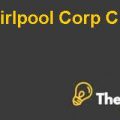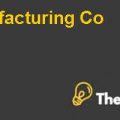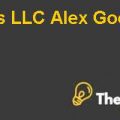
3) Why did Walter Hewlett vote for the deal in the board room and vote against it as an investor?
Since, Hewlett believed that the investment would not be in favor of HP and its shareholders, therefore, he opposed the merger decision but after his discussion with Larry Sonsini, who was the legal consultant of HP, he realized that whether he votes against or in favor of the deal in board room, the merger will be initiated in both the cases, but the adverse result of his opposition in board room will weaken the negotiating position of HP in order to negotiate on acquisition price; which will ultimately lead to higher price being paid for acquisition., Therefore, Walter Hewlett, in the capacity of HP’s director, decided to vote in favor of the acquisition in the board room in order to protect HP’s interest in acquiring Compaq and secure a reasonable price for the acquisition to be finally approved by the shareholders.
On the other hand, Hewlett knew that the acquisition of Compaq would not be in the wider interest of HP’s existing shareholders because their investments’ exposure to unprofitable business of personal computers coupled with the diversion of management concentration from profitable business of printing and imaging to personal computer solutions. Moreover, HP would be exposed to the risk of integrating unwanted business units into their profitable business units; which will put the shareholders’ investment on risk. Therefore, Hewlett, in the capacity of investor, voted against the acquisition deal.
4) What is your assessment of the role played by third parties - consultants, investment bankers, analysts and institutional investors in this deal?
According to the J.P. Morgan analysis, the merger of HP and Compaq would not increase the shareholders’ value; therefore, they did not recommend the acquisition of Compaq.
As per the analysis of Bank of America, they suggested that the final decision of merger should be based on the tradeoffs between the benefits of combined business of HP and Compaq and stand alone business of HP.
Accenture and McKinsey have evaluated the due diligence of operation and strategy of HP and Compaq in the capacity of consultant of Compaq and HP and according to McKinsey the merger is successful where the acquirer has good knowledge of the target firms’ business and HP does not have sufficient knowledge of personal computer industry, therefore, this acquisition will not be a successful deal. However, both the consultants can find positive results of merger; therefore, they do not recommend the merger.
Goldman Sachs and Salomon carried out the financial analysis of the two companies and calculated the exchange ratios for the share exchange, however, the board members of HP and Compaq agreed with their analysis that helped them to gain the confidence of the management to go with their decision of merger with Compaq.
Institutional Shareholder Services (ISS) were hired by Fiorina and Capellas in order to gain confidence of institutional shareholders and they did their job and made the acquisition successful, however, the Vice President of ISS was of an opinion that merger would not be in the interest of shareholder.
Meanwhile, other independent investment advisors such as Booz Allen & Hamilton (BAH), Laurence Hoagland and FFL were hired by the Packard Foundation, Hewlett Foundations and the Trust. These independent investment advisors provided their analysis of the proposed acquisition that was used by the Packard Foundation, Hewlett Foundations and the Trust while negotiating with the HP board.
Moreover, institutional investor’s had played an important role in acquisition of Compaq and these institutional investors were led by Hewlett and made strong opposition against the proposed acquisition of Compaq, however, the board was successful in gaining final approval of shareholder with 51.4% votes in favor of acquisition but this approval was with very little margin; which proved that the shareholder were also widely divided on the acquisition deal.
5) In Exhibit 6, Goldman Sachs performed a contribution analysis and listed some implied exchange ratios. Can you replicate these analyses? What are the pros and cons of this approach in determining the exchange ratio in a stock-to stock deal? What about the historical exchange ratio analysis in Exhibit 7.
The approach applied in determining the implied exchange ratios are as per industry norms and customs, however, this approach fails to consider the revenues lost or cost savings achieved as a result of synergy effect, accounting standard used in acquisition process and tax shield on interest payments on use of debt financing...................................
This is just a sample partial case solution. Please place the order on the website to order your own originally done case solution.









